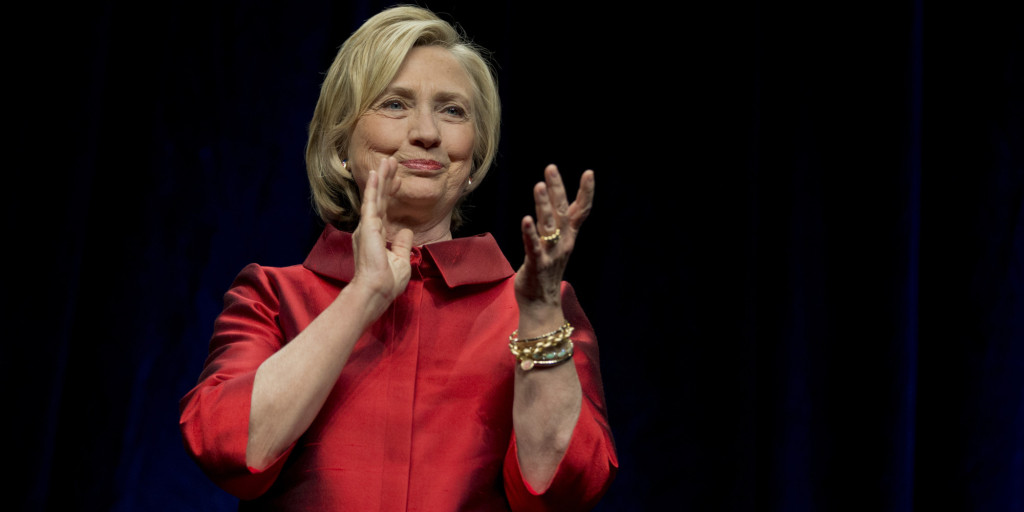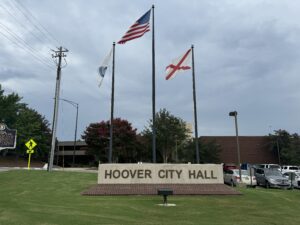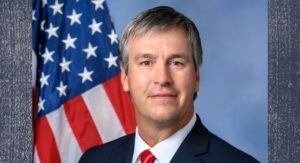Alabama Juvenile Justice Task Force releases policy recommendations

The Alabama Juvenile Justice Task Force — a group formed in June tasked with performing a comprehensive, data-driven review of Alabama’s juvenile justice system and coming to consensus on policy recommendations that protect public safety, hold youth accountable, control costs, and improve outcomes for youth, families and communities — on Monday delivered a set of policy recommendations to Governor Kay Ivey and other state leaders. The recommendations are expected to form the foundation for statutory and budgetary changes that will be considered in the 2018 legislative session. “At its first meeting, I asked the Task Force to examine our state’s data, gather input from Alabamians, and work together to develop a set of recommendations to make our communities safer and put youth back on the right track,” Ivey said. “These recommendations propose steps for reaching those important goals.” Since its formation, the Task Force met six times to examine Alabama’s juvenile justice system data, review input from hundreds of roundtable participants, and assess national research on effective ways to hold youth accountable while reducing their chances of reoffending. The group learned from states such as Georgia that have successfully expanded evidence-based services and improved public safety while diverting youth who commit lower-level offenses from deeper involvement in the criminal-justice system. “The Task Force worked diligently to fulfill our charge to find solutions that improve outcomes for our communities and for our youth,” said Task Force member, Alabama Chief Justice Lyn Stuart. “Our recommendations will strengthen the juvenile justice system by increasing the range of effective community-based options available to judges and juvenile probation officers across the state while focusing judicial resources on the most serious threats to public safety.” The 20-member Task Force included state leaders from both parties and all three branches of state government representing a wide range of groups, including legislators, judges, district attorney, sheriff, educators, and others. The Task Force conducted months of data analysis, stakeholder outreach, and policy assessment before approving recommendations to: Keep youth who commit lower-level offenses from unnecessary involvement in the juvenile justice system through early interventions and swift, consistent responses; Protect public safety and more effectively allocate taxpayer dollars by focusing system resources on youth who pose the greatest risk to public safety; and Improve public safety outcomes through increased system accountability and reinvestment into evidence-based programs in local communities. House Speaker Mac McCutcheon said, “These data-driven recommendations provide an opportunity to align our system with effective practices and with the values we share as Alabamians. That means less crime, lower costs for taxpayers, and better outcomes for Alabama’s youth and families.” The Task Force based its recommendations on the following key findings: Youth who commit lower-level offenses make up the majority of the juvenile justice population, and two-thirds of youth in the custody of the Department of Youth Services (DYS) are committed for non-felonies; Judges and probation officers lack access to evidence-based services to hold youth accountable and strengthen families in their own communities; and Out-of-home beds cost taxpayers as much as $161,694 per youth per year despite research showing poor public-safety returns, especially for youth who commit lower-level offenses. If adopted and implemented, the Task Force’s recommendations are projected to reduce the state’s out-of-home population of youthful offenders by 50 percent from projected levels by 2023, freeing more than $43 million in funds for reinvestment over five years. “We know there are proven ways to change Alabama’s juvenile justice system for the better,” said State Senator Cam Ward, who co-chaired the Task Force. “Together we can create a better juvenile justice system that shifts young people away from criminal behavior so that they do not move into the adult corrections system.” Representative Jim Hill, a retired judge who chairs the House Judiciary Committee and is a member of the Task Force, said, ” I know that Alabama’s juvenile justice system needs to be focused on public safety as well as working to ensure the best outcome for the individual juvenile. Locally operated programs that allow juvenile probation officers and other professionals access to the juvenile and the family often provide the best opportunity for this. I look forward to working to make many of the task force recommendations a reality for the children of Alabama.” The Task Force membership includes: Senator Cam Ward, 14th District (co-chair) Representative Jim Hill, 50th District (co-chair) Judge Bob Bailey, 15th Judicial Circuit Daryl Bailey, District Attorney, Montgomery County Lynn Beshear, Commissioner, Department of Mental Health Gar Blume, Defense Attorney, Blume & Blume Attorneys at Law, PC William Califf, designee of Senate President Pro Tempore Del Marsh Derrick Cunningham, Sheriff, Montgomery County Christy Cain deGraffenried, Executive Director, Alabama Children First Representative Matt Fridy, 73rd District Senator Vivian Figures, 33rd District Judge Adrian Johnson, 2nd Judicial Circuit Steven Lafreniere, Executive Director, Department of Youth Services Jim Loop, Deputy Director, Department of Human Resources Cary McMillan, Director, Family Court Division, Administrative Office of Courts Judge David Money, Henry County Commissioner, designee of Association of County Commissions of Alabama Chief Justice Lyn Stuart, Alabama Supreme Court Dr. Kay Atchinson Warfield, Education Administrator, Alabama State Department of Education Andrew Westcott, designee of House Speaker Mac McCutcheon Dave White, designee of Governor Kay Ivey The Pew Charitable Trusts and the Crime and Justice Institute at Community Resources for Justice provided technical assistance to the Task Force at the invitation of Alabama leadership.
Hillary Clinton reaches out (and out and out!) for 2016 policy ideas

Earlier this year, Hillary Rodham Clinton‘s campaign lost count of its experts. In the months before she began her second run for the White House, Clinton spent hours quizzing economists, lawyers, educators and activists about everything from executive compensation to the latest research on lead paint. By last fall, the number of experts she had interviewed hit two hundred and her team stopped keeping track. “It was like I hadn’t left Harvard,” Roland Fryer, an economist at the university, said of his meeting with Clinton to discuss successful charter school practices. “It was like talking to a colleague and debating over a cup of coffee.” The Democrat isn’t an incumbent, and even with competition that’s resolute but still far from offering a serious primary challenge, Clinton has a luxury few candidates enjoy: time to hit the books. The results have started to emerge, and Clinton plans to add to them by releasing a new domestic policy proposal nearly every week this summer. To be sure, politics are at play as Clinton shapes her agenda. She is sidestepping foreign affairs, which has consumed much of the early debate among Republican White House hopefuls eager to paint the former secretary of state with President Barack Obama‘s record on the world stage. She is not yet offering specifics on subjects where consensus among Democrats and independent voters will be harder to find: trade, limits on executive pay, regulating the country’s finance industry, raising the minimum wage to $15 an hour. What Clinton debuts in the coming weeks will form the core platform of her campaign and, should she win the nomination and the presidency, her administration. It’s an agenda Clinton describes as that of a “pragmatic progressive,” centered on families and focused on economic growth, innovation and income inequality. Already introduced: proposals for paid family leave, free community college, universal pre-kindergarten, lowering student debt and job retraining. Still to come: ideas about taxes, climate change, education, wages, Wall Street and business regulations, which she’s given the more politically palatable name of “corporate responsibility.” “There is genuine curiosity and interest in exploring all of this from Clinton and her team,” said Felicia Wong, head of the liberal Roosevelt Institute, who has urged Clinton to aggressively counter income inequality. “But the details will matter a lot.” Most especially to those who wanted Sen. Elizabeth Warren, D-Mass., to get into the race and are now packing town halls held by Vermont Sen. Bernie Sanders, an independent running for the Democratic nomination from Clinton’s left. Clinton’s challenge is to craft positions that will satisfy that grassroots segment of her party, but won’t also vilify the wealthy – particularly the donors she’ll need to pay for a campaign expected to cost $1 billion. So while Clinton consulted progressive champions, including Columbia University economist Joseph Stiglitz and New School labor economist Teresa Ghilarducci, she’s also talked with Democrats with close ties to Wall Street, such as former Treasury chiefs Robert Rubin and Larry Summers. It’s a reach-deep approach aimed in part at correcting mistakes made during Clinton’s 2008 campaign, which was criticized by some Democrats for being too insular. “In 2008, when we saw each other, she would ask me questions,” said Miami Dade College President Eduardo Patron, an education expert who first met the Clinton in 1980. “This time is more methodical, and that’s very intentional.” Aides began pulling together briefing books last year. Her campaign says work by Harvard University sociologist Robert Putnam, the author of a book on childhood poverty and the “opportunity gap,” and Brookings Institution fellow Isabel Sawhill, who studies the decline of marriage and income inequality, particularly influenced Clinton’s early thinking. Since then, Clinton’s research has continued in meetings, phone calls and emails with individual and larger groups of unpaid, informal advisers. Some have known the Clintons for decades, while others who are newer to the circle. Harvard Professor Raj Chetty, an expert on social mobility, guided Clinton through slides on research into how children in certain areas of the country are more likely than others to get ahead. Heather Boushey, president of the liberal Center for Equitable Growth, provided data on the economic impact of the growing number of female breadwinners. Those who have met with Clinton say she often questioned whether their policy ideas can be “scaled up” to a national level and also used the gatherings to run her own ideas past outside experts. “It was made clear that we weren’t just going to sit down for an hour,” said Katie Porter, a law professor at the University of California, Irvine, and expert in consumer bankruptcy. “We were going to think, refine our ideas and have more conversations.” The results of the research are evident in the campaign. While talking about race relations during a visit to an African-American church in Missouri last month, Clinton detailed the impact of lead paint poisoning on young children. A speech to a Latino organization in Las Vegas earlier this month featured data on how many words children hear by the age of three. At stops in New Hampshire, Clinton frequently mentions the average debt burden for students in the state. “She can wonk-out for hours,” said Neera Tanden, a former adviser who’s now helping craft campaign policy as president of the liberal-leaning think tank Center for American Progress. “She’s one of the few people who talking about policy can get her into the greatest of moods.” Republished with permission of The Associated Press.


